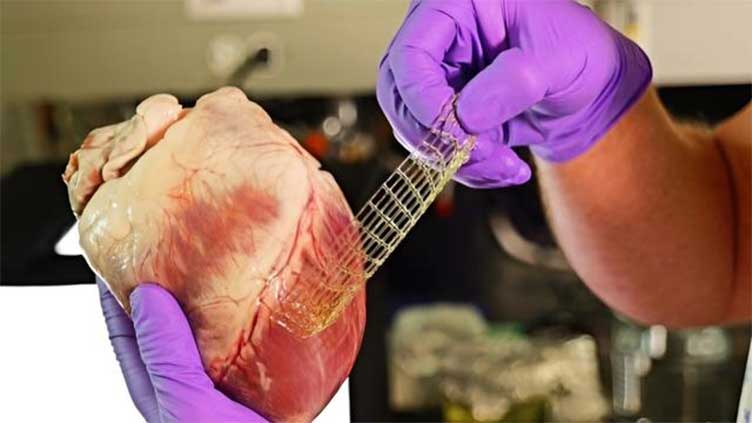In a groundbreaking development that promises to redefine the future of medical treatments, scientists have unveiled a new 3D-printed flexible patch designed to repair damaged tissues. This innovative approach leverages the power of advanced 3D printing technology, bringing a new dimension to regenerative medicine and offering hope to millions suffering from tissue damage due to injury or disease.
The Promise of 3D Printing in Medicine
3D printing, also known as additive manufacturing, has already made significant strides in various industries, including aerospace, automotive, and consumer goods. Its application in medicine, however, represents one of the most exciting frontiers. The ability to create custom, patient-specific solutions offers immense potential for personalized healthcare. The development of the 3D-printed flexible patch marks a significant milestone in this journey.
How the 3D-Printed Patch Works
The new patch is created using a biocompatible material that mimics the properties of natural tissue. It is designed to be flexible, allowing it to conform to the body’s contours and integrate seamlessly with the surrounding tissues. This flexibility is crucial, as it enables the patch to move with the body, reducing the risk of rejection and enhancing the healing process.
The process begins with a detailed scan of the damaged area, which is used to create a precise 3D model. This model guides the 3D printer as it constructs the patch layer by layer. The use of advanced bio-inks, which contain cells and growth factors, ensures that the patch not only covers the damaged area but also promotes tissue regeneration.
Advantages Over Traditional Methods
Traditional methods of tissue repair, such as grafts and transplants, often come with significant drawbacks. These can include the risk of infection, limited availability of donor tissue, and the potential for immune rejection. The 3D-printed patch addresses these issues by providing a custom-made solution that is tailored to the patient’s specific needs.
Moreover, the patch can be produced relatively quickly and at a lower cost compared to traditional methods. This makes it an attractive option for both patients and healthcare providers. The ability to produce patches on demand also reduces the dependency on donor tissues and eliminates the waiting time associated with transplants.
Potential Applications
The potential applications of the 3D-printed flexible patch are vast. It can be used to repair a wide range of tissues, including skin, muscle, and even organs. For instance, burn victims could benefit from patches that promote the regeneration of healthy skin, while patients with heart disease could receive patches to repair damaged cardiac tissue.
In addition to its use in treating injuries and diseases, the patch could also play a role in cosmetic and reconstructive surgery. The ability to create custom patches that match the patient’s unique anatomy could lead to more natural-looking results and faster recovery times.
Clinical Trials and Future Prospects
While the initial results of laboratory tests are promising, the 3D-printed flexible patch is still in the early stages of development. Clinical trials are necessary to determine its safety and efficacy in humans. These trials will involve rigorous testing to ensure that the patch performs as expected and does not cause adverse reactions.
If successful, the patch could revolutionize the field of regenerative medicine. The ability to repair damaged tissues quickly and effectively could significantly improve patient outcomes and reduce healthcare costs. Furthermore, ongoing advancements in 3D printing technology and biomaterials are likely to enhance the capabilities of these patches even further.
Ethical Considerations
As with any new medical technology, the development of the 3D-printed flexible patch raises important ethical considerations. These include issues related to accessibility, affordability, and the potential for misuse. Ensuring that this technology is available to all who need it, regardless of their financial situation, will be crucial.
Moreover, strict regulatory oversight will be necessary to ensure that the patches are used appropriately and that patients are fully informed about the potential risks and benefits. Transparency in the development and deployment of this technology will be essential to maintaining public trust.
Conclusion
The advent of the 3D-printed flexible patch represents a remarkable advancement in the field of medical science. By offering a custom-made, biocompatible solution for repairing damaged tissues, this innovative technology has the potential to transform the way we approach healing and recovery. As research and development continue, we can look forward to a future where tissue repair is more efficient, effective, and accessible than ever before.
This breakthrough not only highlights the incredible potential of 3D printing in medicine but also underscores the importance of continued investment in cutting-edge research. With further refinement and testing, the 3D-printed flexible patch could soon become a standard tool in the arsenal of medical professionals, offering new hope to patients around the world.
